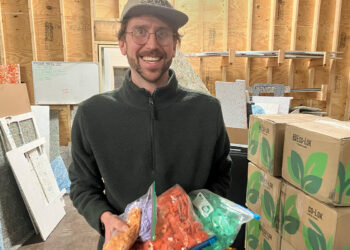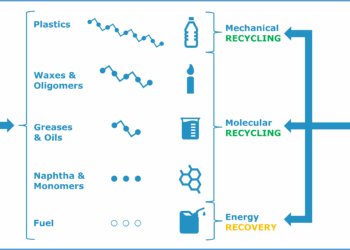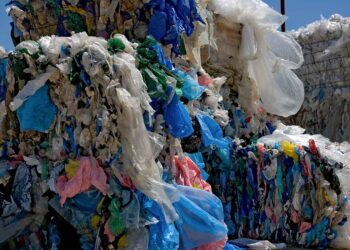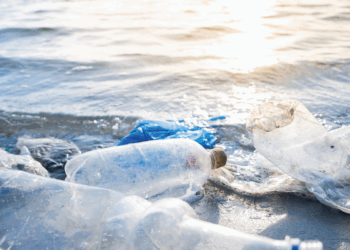 Imagine a lump of sugar dissolving in coffee – Solenne Brouard uses that image to describe the first step in her company’s expanded polystyrene recycling process.
Imagine a lump of sugar dissolving in coffee – Solenne Brouard uses that image to describe the first step in her company’s expanded polystyrene recycling process.
Now image the sugar is later extracted from the coffee, formed into pellets and sold right back into the fresh sugar market, without any discoloration or quality tradeoffs. That’s how one might liken the key step in the recycling process employed by her company, Polystyvert.
“The quality is really important, because our claim is that our process recycles the polystyrene (PS) with quality very close to virgin PS, so we can sell this PS to better prices than regular repro pellets,” said Brouard, president and founder of the company.
Brouard spoke with Plastics Recycling Update: Technology Edition recently to provide additional details about her fast-growing Montreal company’s novel recycling technology. In August, Plastics Recycling Update: Technology Edition reported Polystyvert has raised about $3.77 million to build a larger processing facility capable of recycling more EPS.
Essential step
Founded in 2011, Polystyvert sells what it calls “concentrators” to large generators of EPS, including appliance distribution centers, grocery stores and businesses in the pharmaceutical industry. Those concentrators, which are installed at the generators’ sites, include an input chute into which workers drop EPS. They also include a removable cartridge holding essential oils called p-Cymene, which dissolve the EPS on contact.
Brouard said the oils are a natural product, similar to oils found in eucalyptus or peaches, as examples. They are different from limonene, a liquid derived from citrus fruits that dissolves PS.
Polystyvert’s oils change the plastic’s state, similar to freezing and melting water, but no chemical reaction takes place, she said.
“A chemical reaction would change the molecular chain of the PS,” she said. “In our case, it does not change. That’s very import for the PS end product.”
Contaminants, including labels, food and other materials, are easily filtered out later, although they do raise Polystyvert’s costs, she noted. She pointed to the fact cardboard works as a sponge to soak up the oils, preventing their recovery for reuse.
The concentrators automatically notify Polystyvert when they’re full, each holding up to 660 pounds of dissolved PS. Polystyvert collects the concentrators and loads them in a truck, replacing the cartridge with a new one full of oils.
Separation approach
At its recycling facility, Polystyvert uses a proprietary process to separate the PS from the oils, which are distilled for reuse.
The company has applied for an international patent for the separation technology. According to the patent application, the mix of PS and p-Cymene is added to a hydrocarbon-based compound or mixture in which PS is insoluble. That creates a precipitated PS, which is again washed with the hydrocarbon solution. Then the PS is dried before being extruded.
Depending on the batch size, separation can take an hour or less, Brouard said.
The company is currently recycling EPS of various colors into a gray pellet and white EPS into a natural pellet. The current pilot plant can produce 550 pounds per hour of recycled PS, but the new facility, expected to open in late 2017, will be capable of recycling 10 times that amount, Brouard said.
The pellets aren’t yet being sold into food packaging markets because regulatory approvals haven’t yet been obtained, she said. Polystyvert is working first to obtain approval from Health Canada. It also plans to seek U.S. Food and Drug Administration approval.
Brouard said Polystyvert’s process allows recovered plastics to be sold for higher prices than when a densifier is used. That’s because a densifier’s melting of the plastic generates fumes and results in material with lower shock resistance and tensile strength and higher melt flow.
That being said, a densifier is a step in the right direction.
“If you have a choice between landfill and densifier, take the densifier, but you won’t make a lot of money with that,” she said.
Scaling up
Polystyvert sells or rents concentrators to EPS generators and charges for pickups, with prices depending on the volume of material, level of contamination and distance from the pilot plant.
The company currently works with commercial entities across Quebec, including grocery store chain Sobeys. Through a pilot project, Sobeys is using the concentrators to recycle back-of-house food trays.
Most of the company’s revenue, however, comes from the sale of recycled commodities, Brouard said.
Polystyvert also collects EPS from the public via drop-offs in the Quebec towns of Granby and Waterloo. Contamination hasn’t been a problem from those locations, Brouard noted, because the people willing to drive their foam down to the drop-off sites are conscientious and do a good job of removing contaminants and sorting foam.
Polystyvert has also talked with officials at the city of Montreal about recycling foam collected from households, Brouard said, although details on how that service could look are yet to be determined.
























